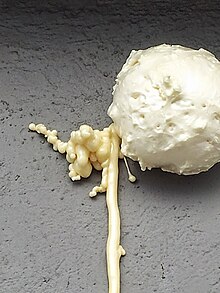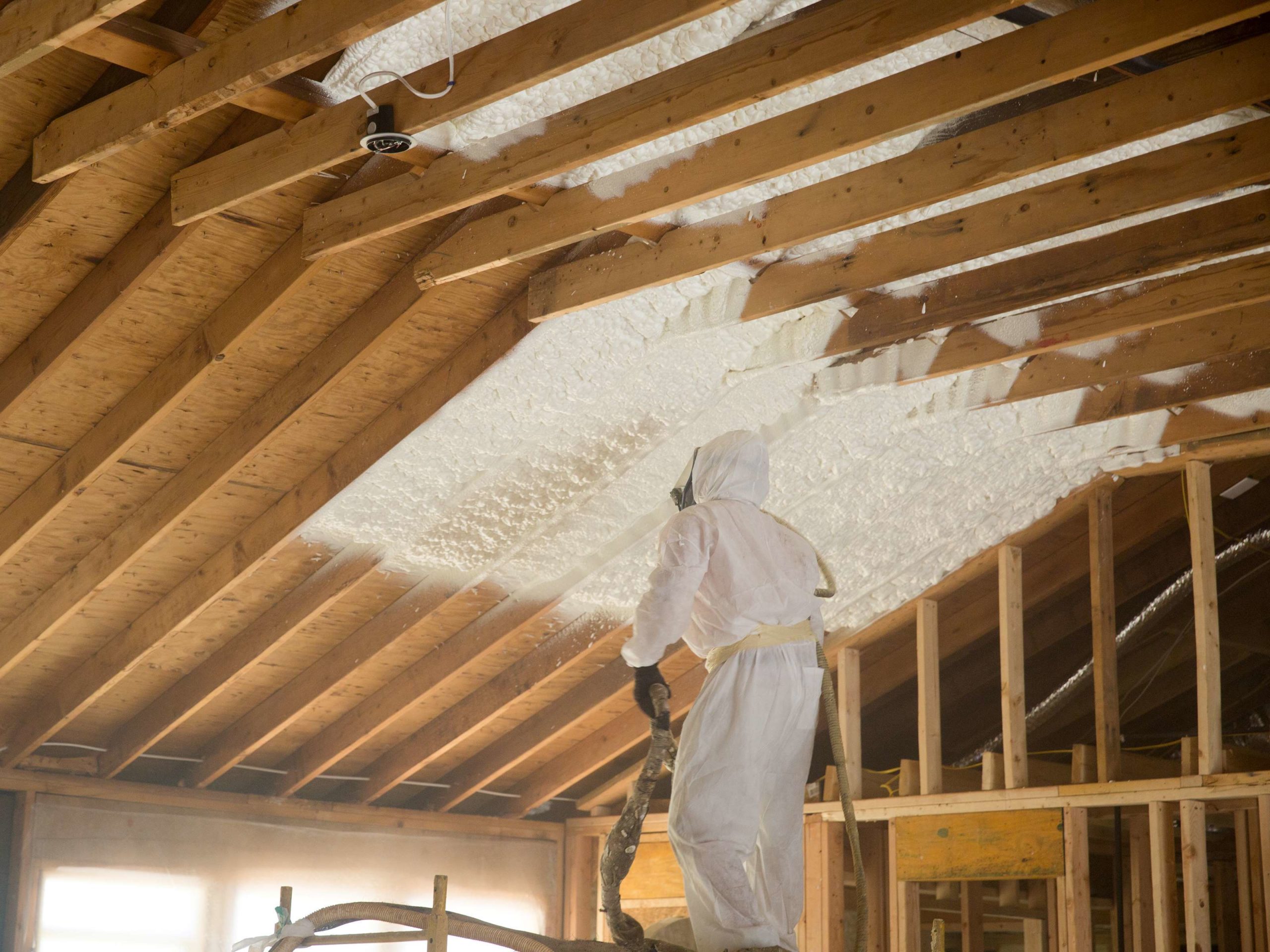Spray Foam: The Ultimate Solution for Air Sealing and Insulation
Spray foam insulation has actually emerged as a leading solution for efficient air securing and thermal insulation, offering an one-of-a-kind mix of residential or commercial properties that set it apart from traditional techniques. Its capability to expand and fill gaps makes it particularly reliable in preventing air leak, which can substantially impact power performance. Understanding the complete extent of its benefits, installation processes, and contrasts with various other insulation kinds is crucial for making educated choices. As we explore these elements, the effects for both new constructions and retrofits become progressively considerable. What elements should affect your choice?
What Is Spray Foam?
Spray foam is a versatile insulation material that integrates the principles of air securing and thermal resistance to enhance energy performance in structures. Composed largely of polyurethane or other comparable compounds, spray foam is applied as a liquid that increases upon contact with surfaces, developing a strong, continuous layer of insulation. This one-of-a-kind residential property enables it to load gaps, splits, and voids that traditional insulation materials might ignore, offering an exceptional air seal.
There are two primary kinds of spray foam: open-cell and closed-cell. Open-cell spray foam is lighter and more versatile, providing excellent audio absorption and a reduced R-value per inch - Spray Foam. In comparison, closed-cell spray foam is denser, supplying a greater R-value, moisture resistance, and included architectural stability to building elements
The application procedure generally involves specialized devices, making sure a smooth application that sticks to various substratums, consisting of concrete, steel, and wood. This flexibility makes spray foam appropriate for both new buildings and retrofitting existing structures. Its ability to produce an airtight obstacle substantially adds to minimizing energy intake and enhancing interior air top quality, thus making it a favored option among house owners and contractors alike.
Advantages of Spray Foam Insulation
One of one of the most substantial benefits of spray foam insulation is its exceptional capability to produce a continuous air barrier, which properly reduces power loss. Unlike traditional insulation materials, spray foam expands to fill gaps and splits, making certain that air leak is drastically reduced. This characteristic not just enhances energy efficiency however additionally leads to reduce energy bills over time.
Additionally, spray foam insulation provides superior thermal resistance, contributing to a much more steady indoor atmosphere. Its high R-value per inch allows for reliable insulation in constrained spaces, making it ideal for attic rooms, walls, and crawl areas. Moreover, the moisture-resistant properties of spray foam aid stop mold and mold growth, advertising healthier living conditions.
An additional essential benefit of spray foam insulation is its sound-dampening high qualities (Spray Foam). It effectively lowers sound transmission between areas, creating a quieter and a lot more comfortable home atmosphere. The sturdiness of spray foam likewise stands out, as it does not droop or clear up with time, keeping its performance throughout its lifespan
Exactly How Spray Foam Functions
Recognizing how spray foam insulation functions is vital for valuing its efficiency in air securing and thermal resistance. Spray foam insulation includes two primary components: isocyanate check that and polyol material. When these elements are combined, they undergo a chain reaction that creates the material to expand swiftly, creating a thick foam that fills splits, tooth cavities, and spaces.
As the foam expands, it sticks to surfaces, creating an airtight seal that considerably decreases air infiltration. This characteristic makes spray foam insulation extremely effective at stopping drafts and moisture infiltration, which can lead to energy loss and damages in time. Additionally, the closed-cell version of spray foam offers superior thermal resistance as a result of its rigid framework, successfully reducing heat transfer.
The one-of-a-kind homes of spray foam allow it to comply with irregular surface areas, making sure extensive insurance coverage and a smooth obstacle. Therefore, spray foam insulation not only improves power effectiveness but likewise contributes to enhanced interior air high quality by minimizing the build-up of toxins and irritants. Eventually, comprehending the auto mechanics behind spray foam underscores its role as a remarkable choice for insulation and air sealing in both household and commercial applications.
Installation Refine Introduction

Before installation, the see it here space should be sufficiently cleansed and prepped, making certain that surfaces are without dirt, debris, and moisture. This step is crucial since pollutants can compromise adhesion and overall efficiency. hop over to here When the area is prepared, the application involves blending both elements of the spray foam, which broadens upon call and fills up spaces effectively.
Educated experts ought to carry out the installment, using customized equipment to make certain consistent insurance coverage and optimum thickness. Safety preventative measures, including putting on safety equipment and making certain proper air flow, are imperative during this process. After application, the foam usually remedies quickly, developing a strong barrier that improves energy performance.
Contrasting Spray Foam to Traditional Insulation
When evaluating insulation options, spray foam insulation stands apart in contrast to traditional materials such as fiberglass and cellulose. One of the primary advantages of spray foam is its premium air securing abilities. Unlike fiberglass and cellulose, which can enable air infiltration, spray foam broadens upon application, loading voids and crevices to develop an impermeable seal. This leads to boosted power performance, as less warmed or cooled down air leaves the home, bring about reduced utility expenses.
Additionally, spray foam provides a greater R-value per inch than typical insulation types, providing more reliable thermal resistance in a thinner account. This particular is especially helpful in areas with restricted cavity deepness. Spray foam is resistant to moisture and mold and mildew development, which can be a substantial issue with cellulose and fiberglass, specifically in moist settings.
Nevertheless, spray foam insulation usually lugs a higher ahead of time expense than its standard counterparts. House owners should weigh this initial financial investment versus lasting energy cost savings and performance benefits. Eventually, while both insulation kinds serve their function, spray foam becomes a much more sophisticated option for contemporary insulation needs, specifically in regards to air securing and thermal effectiveness.

Conclusion
In recap, spray foam insulation stands for a very efficient service for achieving optimal air sealing and thermal resistance. Its one-of-a-kind homes, including wetness resistance and sound dampening, make it appropriate for various applications in both brand-new buildings and retrofitting tasks (Spray Foam). Although the preliminary costs might be greater contrasted to traditional insulation materials, the lasting benefits, such as substantial power savings and boosted interior air top quality, justify the investment and underscore its worth in modern building methods.
Spray foam insulation has emerged as a leading service for reliable air sealing and thermal insulation, providing a distinct mix of homes that establish it apart from typical approaches.Spray foam is a flexible insulation product that combines the concepts of air securing and thermal resistance to improve power performance in structures.When reviewing insulation alternatives, spray foam insulation stands out in comparison to conventional materials such as fiberglass and cellulose. Ultimately, while both insulation types offer their function, spray foam emerges as a much more advanced remedy for modern insulation requirements, particularly in terms of air sealing and thermal effectiveness.
In recap, spray foam insulation represents a very effective solution for accomplishing ideal air securing and thermal resistance.